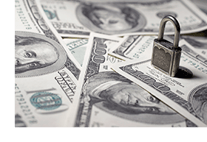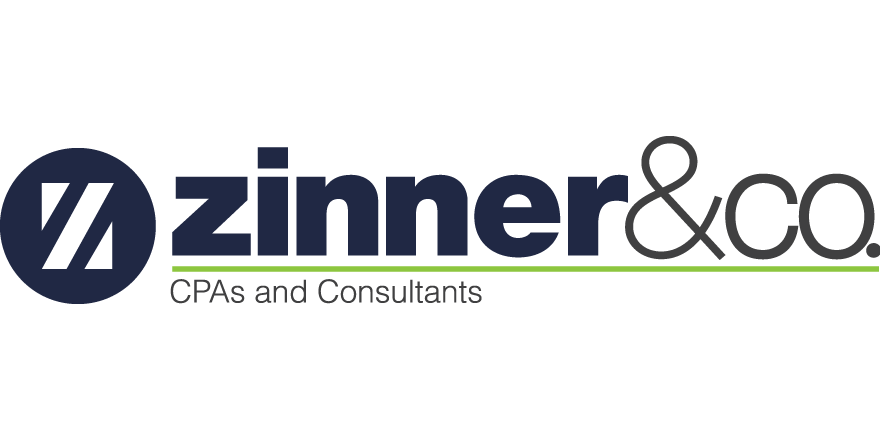During the COVID-19 pandemic, the need to plan for taxes has become even more important due to all the changes from recently passed coronavirus relief legislation and especially for those businesses seeking forgivable loans through the Paycheck Protection Program (PPP).
While the PPP legislation was designed to help businesses weather the economic storm that many “Stay at Home" orders have created by providing funding to continue to employ workers and, the ramifications of not fully understanding the restrictions for use of these funds could ultimately cause further challenge for business owners.

Business owners and non-profits are strongly urged to reach out to their Zinner & Co. Client Service Team and should feel comfortable accessing information provided by our team of Recovery Specialists, not only in the Paycheck Protection Program (PPP) application process, but also in the proper documentation and accounting for loan proceeds.
While the loan proceeds were not intended to be taxable for Federal income tax purposes, the Internal Revenue Service’s recent announcement regarding the deductibility of expenses being paid with PPP loan proceeds can severely impact tax planning for the 2020 calendar year.
Based upon our preliminary calculations, Zinner & Co. has been successful in assisting over thirty clients in successful applications for PPP loans.
- We helped our clients secure approximately $11 million in PPP loan proceeds, with an additional $2.75 million still pending.
- These approved loans have ranged from approximately $15,000 to upwards of $2.5 million.
- After removing all loans over $2 million, which skew averages, the average loan size for a Zinner & Co. client is approximately $200,000.
What is the Paycheck Protection Program?
For business owner and non-profits, one of the more popular parts of the recently passed COVID-19 relief legislation was the creation of the Paycheck Protection Program, which operates under the U.S. Small Business Administration. The program provides business, including sole proprietors, independent contractors, and self-employed persons; 501(c)(3) non-profit organization, 501(c)(19) veterans organization and other qualifying entities with a forgivable loan.
These loans will be fully forgiven if the business or organization has retained their employees for eight weeks and the money loaned is used for payroll, rent, mortgage interest, or utilities. At least 75 percent of the forgiven amount must be used for payroll. Loan payments will be deferred for six months and no collateral or personal guarantees are required. Neither the government nor lenders will charge small businesses any fees.
For amounts that are not forgiven, the remaining PPP loan will mature in 2 years and comes with an interest rate of 1 percent. There is also a payment deferral for the first six months of the loan term.
Potential borrowers can apply through any existing SBA 7(a) lender or through any federally insured depository institution, federally insured credit union, and participating Farm Credit System institution. Other regulated lenders will be available to make these loans once they are approved and enrolled in the program.
Rounds I and II of PPP Funding
The initial first round of PPP funding dried up days after it was introduced in early April, as business owners and non-profit leaders throughout the U.S. hoped to utilize this revenue to keep their employees on their payroll.
Unfortunately, the target audience of the program – small business owners and smaller not-for-profit organizations – had major trouble submitting their loan applications for a number of reasons, including technical website issues on the part of the SBA. Many others, who successfully submitted their loans, are still waiting to find out if their loan application was approved.
In addition to issues submitting applications, they also faced competition from publically traded companies, whom were not supposed to receive any funding. This aspect has been well-reported by many major media outs, and companies such as Ruth’s Chris Steakhouse and the Los Angeles Lakers have agreed to return the loans they received.
After the first round of funding dried up, Congress allocated an additional $320 billion to the PPP, which began Phase II of funding in late April. This amount, the Treasury Department announced, was only for small businesses who qualify for the program. The use of robotic process automation technology to submit the loans, which overwhelmed the system during Phase I, is now prohibited.
Furthermore, to ensure loans are limited to eligible borrowers, the SBA will audit all loans in excess of $2 million, in addition to other loans as appropriate, following the lender’s submission of the borrower’s loan forgiveness application.
Financial Planning for the PPP
For those applying to the Paycheck Forgiveness Program, careful financial planning is strongly suggested.
 Zinner & Co. Partner Brett W. Neate, CPA, M.Tax, said those seeking loans must provide a lot of information on their application statements.
Zinner & Co. Partner Brett W. Neate, CPA, M.Tax, said those seeking loans must provide a lot of information on their application statements.
Items such as bank covenants and vendor agreements could be impacted by the acquisition of, and use of, the PPP loan proceeds.
He also cautioned the time period after a company re-opens plays a crucial role in the loan forgiveness process.
Forgiveness is based on the employer maintaining or quickly rehiring employees and maintaining salary levels. Forgiveness will be reduced if full-time headcount declines or if salaries and wages decrease.
“This is a band-aid,” Neate said regarding the PPP. “Don’t lose sight of the six-month time period after the PPP. A lot can happen in that time.”
For those companies who carefully plan, the Paycheck Protection Program can help them get through this rough patch, but they need to financially plan for all of their expenses and the loss of revenue at the end of the first quarter, into the second quarter and potential losses in the third and fourth quarters.
 Susan D. Krantz, CPA, CGMA and Zinner & Co. Partner said much of the information required for loan applications for business also apply to non-profit organizations.
Susan D. Krantz, CPA, CGMA and Zinner & Co. Partner said much of the information required for loan applications for business also apply to non-profit organizations.
She also stressed the need for non-profits and businesses to be aware of the timing of their fiscal year and the implications it may have on the application.
What You Need to Know About the Paycheck Protection Program
New guidance on the PPP is being issued on an almost daily basis.
This is the result of rushed legislation and details, which were not fully laid out or thought through. Due to this, there have been a number of issues, many questions and a lot of uncertainty regarding key points of the program.
The American Institute of Certified Public Accountants believes steps for qualification should be simple, straightforward and designed to help small businesses succeed. It is why they are working with the SBA on a number of changes to the program. Among other AICPA recommendations are:
- The eight-week covered period under PPP should align with the beginning of a pay period, not the date loan proceeds are received.
- The eight-week period should begin once local “Stay at Home” orders are lifted, not when loan proceeds are received, so small business have adequate funds to ramp up operations.
- Full-time job equivalent (FTE) employees can be calculated using a simple wage-based proxy when hours worked are not tracked by the employer.
- Payroll reduction calculations should be based on average payroll per employee per week, not total compensation per employee.
Communication is Key
 There is a high potential key details of the program may change and those approved or who are planning to submit an application may not be aware of such changes.
There is a high potential key details of the program may change and those approved or who are planning to submit an application may not be aware of such changes.
It is for this reason Zinner & Co. Managing Partner Robin Baum, CPA, stresses the importance of communication.
“Be proactive and communicate with creditors, your vendors and with your financial advisors,” said Baum. “If you have successfully applied to the Paycheck Protection Program or are planning to do so, you need to talk with one of our Service Team members, who can help you.”





